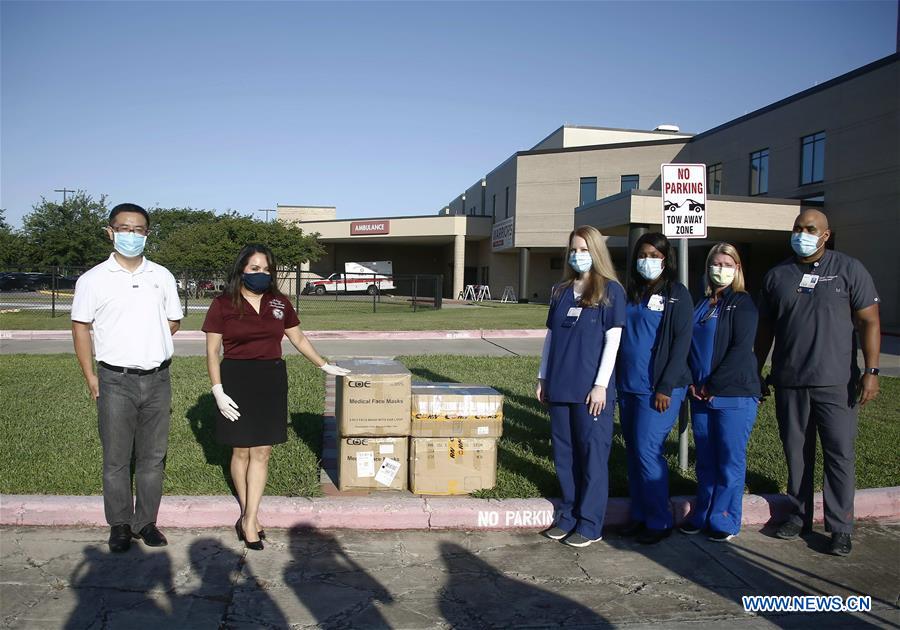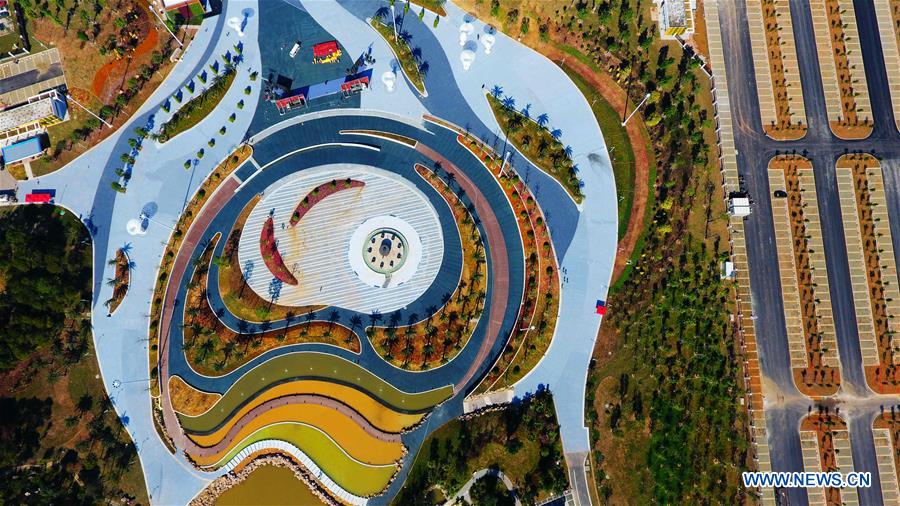
People wait in line to take a body temperature measurement before entering a shop in Rome, Italy, May 18, 2020. On Monday, the third and largest easing of the ten-week-old lockdown went into effect. Shops, restaurants, bars, barbershops, beauty salons, museums, and beachfront operators are all allowed to reopen, provided they respect rules for social distancing amid staff and members of the public and disinfecting facilities. Italians are also allowed to move within the region they live in. (Xinhua/Cheng Tingting)
ROME, May 18 -- The coronavirus pandemic has claimed 32,007 lives in Italy, bringing the total number of cases combining infections, fatalities and recoveries so far to 225,886, according to the latest data released by the country's Civil Protection Department on Monday.
The death toll on Monday was 99, the first time with daily casualties lower than 100 since March 10. Recoveries rose by 2,150 from a day earlier, bringing the total to 127,326.
Nationwide, the number of active infections fell to 66,553, down from 68,351 on Sunday.
Of those who tested positive for the new coronavirus, 749 are in intensive care -- down by 13 from Sunday, and 10,207 people are hospitalized with symptoms -- down by 104 from Sunday.
The remaining 55,597 people, or 84 percent of those who tested positive, are quarantined at home without or with only mild symptoms.
MOST RESTRICTIONS LIFTED
On Monday, the third and largest easing of the ten-week-old lockdown went into effect. Shops, restaurants, bars, barbershops, beauty salons, museums, and beachfront operators are all allowed to reopen, provided they respect rules for social distancing amid staff and members of the public and disinfecting facilities.
Italians are also allowed to move within the region they live in. Further movements between regions would be allowed starting from June 3.
The pandemic has visibly slowed down in recent weeks, yet central and regional authorities warned they would keep a close eye on the epidemic curve, and eventually enforce partial closures at the local level again, in case of new outbreaks that prove out of control.
In a televised address on Saturday night to announce the new government decree allowing this restart, Prime Minister Giuseppe Conte had admitted the country was facing "a calculated risk" in easing the lockdown with the pandemic still ongoing although at a much slower pace.
Yet, the Italian economy has suffered heavily in halting almost all activities since March 10, and many sectors are bracing for what may come in the next months.
ESTIMATED CONSUMPTION PLUMMETS
On Monday, Italy's largest retail and trade association Confcommercio said consumption fell an estimated 47.6 percent in April compared to the same month in 2019 (after a 30.1 percent drop in March).
"The full lockdown has had an impact (last month) the Italian economic system has never seen since World War II," Confcommercio said in a statement.
The most affected sectors appeared to be tourism, entertainment, and apparel retail, while activities linked to the food chain, energy, communications, and the pharmacies were the least hit.
According to Italy's Banking Association (ABI), requests from firms for accessing loans backed by the state's Guarantee Fund grew to about 247,000, exceeding 11.5 billion euros (12.5 billion U.S. dollars) in terms of requested loans, as of Sunday.
"Among these, requests for loans up to 25,000 euros were some 218,000, worth over 4.5 billion euros overall," ABI stated on Monday.
The measure to ensure favorable bank loans to companies hit by the coronavirus emergency was contained in a government decree passed in April. (1 euro = 1.09 U.S. dollars)













